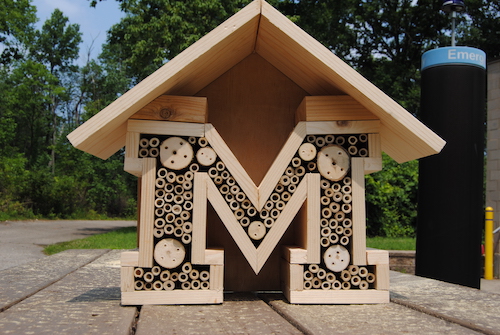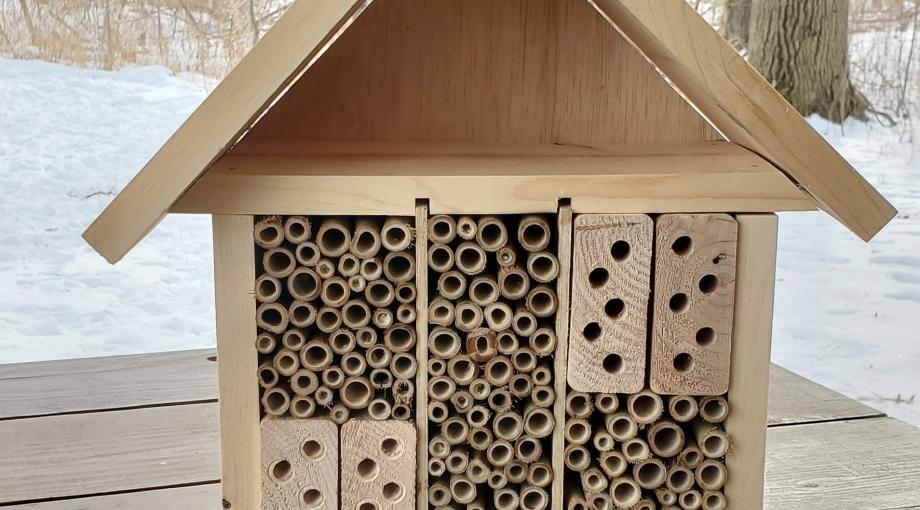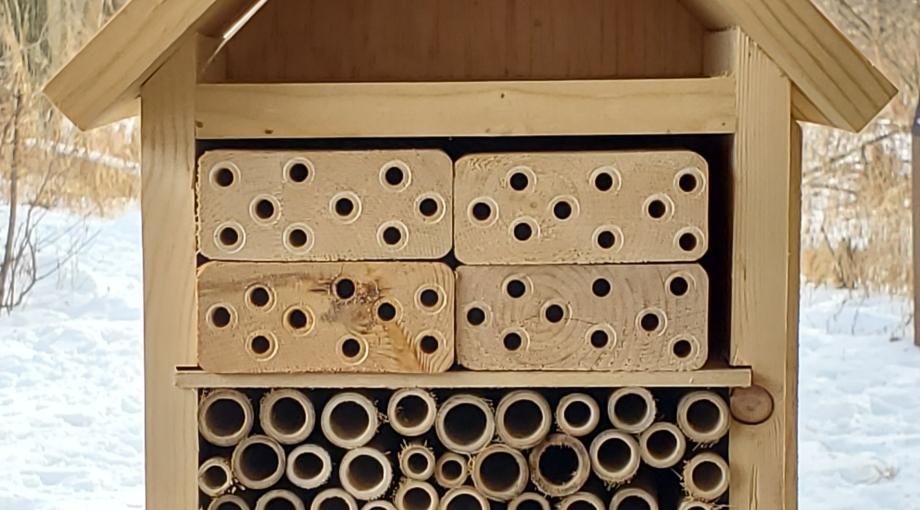Insect Hotels

In the wild, solitary insect species, like wood-boring beetles and solitary bees, search for cavities in wood to lay eggs. These cavities are typically left by burrowing beetles, woodpeckers, or the tree’s own natural growth. Some species, like carpenter bees, will chew their way through wood to make a nesting cavity. Insect hotels are simply man-made replicas of the natural habitats these organisms search for in the wild.
Creating an insect hotel on your own is an easy way to add a creative and functional feature to your garden or landscape. The most important feature of the hotel should be to keep it as natural as possible. A wooden frame can be filled with natural materials for nesting sites. The following table breaks down which insects and other invertebrates can be expected to utilize each type of material.
| Building Material | Possible Visitor(s) |
|---|---|
| sawn logs or wooden blocks with pre-drilled holes | solitary bees, such as mason bees and leaf-cutter bees |
| bamboo or reed stems | solitary bees, such as mason bees and leaf-cutter bees; wasps, such as thread-waist wasps |
| dry leaves | centipedes, beetles, harvestmen |
| sticks | ladybird beetles |
| strips of bark | beetles, woodlice, centipedes, millipedes, spiders |
Insect Hotel Designs
Instructions are available for constructing three different designs of insect hotels.
Hexagonal Insect Hotel

Horizontal Insect Hotel

